Continuing where we left off, here are the best of the best of this year’s new releases, each one a fantastic album that will by turns boggle and blow your mind.
15 | Sunken Foal – Two Moon Junction

Dunk Murphy’s consistency at producing outstanding, unusual electronica – under a variety of noms de guerre – is remarkable. Last year’s Hexose didn’t quite live up to the glory days of the three Friday Syndrome albums (the earliest of which is now almost a decade old), but Two Moon Junction ranks among some of his most exciting work. There’s a relaxed, nocturnal flavour to much of the music, though spiced up with Murphy’s typically twitchy beats, preventing it from ever approaching ambient territory. ‘Trabolgan Acid’ offers a fresh take on a throwback style (echoes of the 808 permeate a number of tracks on the album), setting up a rave environment where the floor keeps seeming to move beneath our feet. ‘The Medium is the Masseuse’ inhabits a gentle, ever-so-slightly irregular world of late night chill, but tilts on its axis in its final third, swiftly transforming into an unexpected place of punch and squelch. Similarly held-back is ‘Gleaming the Cube’, though here Murphy allows it to remain delicate, opting instead to subtly alter its internal elements such that the track stays in the same place while constantly changing appearance. [DL]
14 | Juhani Silvola – The Slow Smokeless Burning of Decay
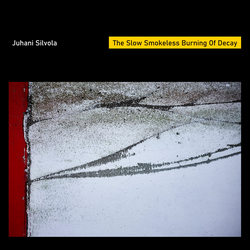
The soundworlds that Juhani Silvola creates are often superbly liminal, providing hints and allusions to the tangible but from a place of uncanny verisimilitude. Familiar and alien simultaneously, and in this album Silvola pushes that liminality further. In part, it’s by upping the tantalisation ante, deliberately keeping the music at the cusp of what we can parse and resolve in the title work. It’s a place of continually re-evolving noise and pitch, but more importantly it plays against our expectations of compositional energy. Electronic music so often abounds with ‘action’ and a surfeit of ‘stuff’; Silvola coolly takes his time, even more so in the main work on the album, Five Failures in Representing our True Nature. There’s a balance here between episodes of activity and passivity, not only blurring real and synthetic sounds but notions of composed and accidental, ending up like the blip, judder and crackle of a pseudo-sentient machine. Restraint with material is also pivotal in Like Garlands of Flowers Spread Over the Chains that Bind Us, where Silvola establishes a palpable sense of potential power, but always handled with extreme care, making sudden plunges into overload all the more exhilarating and overwhelming. [CD / DL]
13 | J. Peter Schwalm & Markus Reuter – Aufbruch
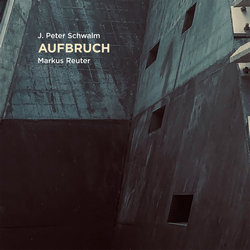
“Its 49-minute duration is divided up into nine tracks, but the more time i’ve spent with it the more i’ve perceived those divisions as becoming blurred, and the tracks as interconnected variations on not so much a theme as a behaviour, a palette and an attitude. Though Schwalm comes at the collaboration from an electronics-focused angle, and Reuter from a guitar-based one, their roles are similarly blurred and while their respective sounds and timbres can often be discerned they’re almost invariably treated such that the resulting music becomes a synthesis of them. […] Yet the main ambiguity is its highly dramatic sense of narrative. Especially mesmerising is the opening track ‘Der Aufbruch’, where its stable, dronal introduction gives way to the intrusion of a new note that triggers small but growing surges in response, while causing the entire atmosphere to become more and more caked in noise, a steady but thrilling development. […] The best example of this drama, and the highlight of the album as a whole, is ‘Abbau’ […]. Its culmination is pure wonderment: a dense, complex soup of stuff, behaviourally and harmonically static yet spontaneous, like a cauldron bubbling with ingredients, to hypnotic effect.” [reviewed in July]
12 | Bára Gísladóttir & Skúli Sverrisson – Caeli

“The aspect of Caeli that is arguably the most beguiling, precisely because it’s the most obviously in a state of flux, is timbre. The fact that just two instruments, double bass and bass guitar, are used (in conjunction with electronics) is only occasionally apparent. Like everything else in Caeli, the music’s timbral identity is remote and allusive, taking the illusory form of a bass clarinet in ‘cieli pesanti’, or extruding into sheets of industrial squeal in ‘anche il mare è un cielo’, and even conjuring up the notion of a swarm of bees in opening track ‘unum caelum’. […] Directly connected to this is the music’s sense of scale: the curling filigree of the bass provides the possibility of intimacy and closeness, which finds its opposite in the seemingly endless vistas stretching as far as the ear can hear. One of the most striking things about Caeli is the way it conveys such strong emotional weight despite being so demonstrably abstract. Depending on your mindset, the track titles may or may not play a part in enhancing that experience (for me they didn’t), but either way, the mysterious goings-on in these all similar, uniquely different tracks offer exhilarating, unsettling windows into the same wondrous, unfathomable cosmos.” [reviewed in April]
11 | Patrick Ascione – Figures de son
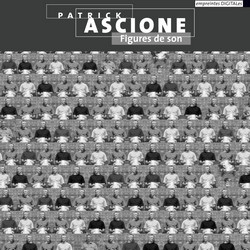
It’s over a decade and a half since Patrick Ascione’s music was last featured on the Empreintes DIGITALes label. The five works on this disc, dating from the period 1998 to 2012, suggest that the wait, while hard to understand, was nonetheless worth it. There’s above all a playfulness pervading them, suggesting Ascione is far more concerned with sound as an end in itself rather than wanting to use it to create, or even allude to, tangible extra-musical narratives. Thus, Enième harnesses the human voice, turning into a repetitive, rhythmically-charged rallying cry for nothing in particular, while Ascionerie no. 6: Fantaisie diabolique is a paean to the wondrous possibilities of vocal mood and expression, transformed into a fantastical tapestry of speech, song, noise and laughter, peppered with beats and occasional bursts of beatboxing. Divertissement is more sonically elusive, cavorting through a series of elegant episodes using a palette that evades identification. But the real highlight is Et puis l’oubli…, a demonstrative work that, even with just two channels, manages to fully enclose and surround the listener in a disorienting, up-close world of shapeshifting glory. [CD/DL]
10 | irr. app. (ext.) – Exhausted Bee

While US musician and artist Matt Waldron has put quite a bit of energy into the creation of monthly singles in recent years, he’s unquestionably at his best in the long-form, surrealist narratives that make up the real substance of his irr. app. (ext.) oeuvre. This year it was extremely difficult to choose between this album and An Imaginary Machine Dreams of Becoming Meat (which I also very highly recommend), but what tipped the scales was the greater level of immersion achieved in Exhausted Bee. One of its primary strengths is the way that Waldron takes great time with material. In this respect, there’s something of an echo of the complex quasi-dronal work that features in some of his previous output. Assorted, unidentifiable and indescribable objects pass over, and through, an atmosphere of not-quite-suspension, creating an environment of static drift. Somehow – and this is a key trait of Waldron’s approach to sound – everything we hear seems natural and artificial at once, alien sounds untouched and processed beyond belief simultaneously. It easily ranks among the finest irr. app. (ext.) releases to date, vividly conjuring up a colossal world of unfathomable wonders. [DL]
9 | Marina – Ancient Dreams In A Modern Land

The most scintillating pop album of the year is also a serious, salient response to the state of the world. The title of the album captures something of that, referencing both past and present (and, by inference, future). Marina touches on the obvious plight facing everyone, addressing lockdown and quarantine, and giving a voice to nature herself: “Don’t forget, I am your home / Virus come, fires burn, until human beings learn / From every disaster, you are not my master”. More powerful by far, though, are the songs more directly focusing on dealing with the persecution and pain that people inflict on each other. One of the album’s most unstoppably forceful tracks is a call to all of us to “purge the poison from our system” and “show us our humanity”. But Marina also turns inward, encouraging self-reflection and personal empowerment. In ‘I Love You But I Love Me More’ it’s a scenario of confidently noping out of a toxic relationship, but most powerful of all is the title track, an irresistible paean to the glory of individuality: “You don’t have to be like everybody else / You don’t have to fit into the norm / You are not here to conform”. [CD/Vinyl]
8 | Lauren Sarah Hayes – Mini Savior Opt.

“The festival’s penultimate evening annual Bates Mill live broadcast concert was, as its title ‘Mix Tape’ suggests, a cross between a smorgasbord and a curate’s egg. Perhaps the most delicious item was Mini Savior Opt., a new semi-improvised electronic piece by Scottish composer Lauren Sarah Hayes. It was heartening that an occasion like this devoted no fewer than 25 minutes to a performance of this kind, all the more so as Hayes’ control over both her technology and her material – which was shaped and energised in part by her physical movements – was superb, channelled with care, patience and deftness into a slowly-evolving soundscape exploring texture and timbre with hints of beats regularly exploding through. Exciting throughout, it was enhanced further by occasional subtle additions of Hayes’ voice, used as a wordless (or, at least, inaudible) source of noise that permeated and churned up the music.” [reviewed at its world première in November 2017] [DL]
7 | Aya – im hole
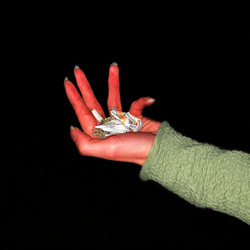
im hole: it’s a nicely ambiguous title, Aya identifying herself with potentialities of emptiness (hole) and completeness (whole), alongside connotations of sex and the possibility, extended in her low-key yet florid lyrics, of this identity coming about with or without someone else. The album presents an eerie, shimmering atmosphere out of which Aya’s voice emerges, initially as a number of tangential floating strands, only slowly coalescing into a coherent form. It opens out into ‘What If I Should Fall Asleep And Slipp Under’, a trippy tale of conflicted intimacy, echoed absent-mindedly in ‘Still I Taste the Air’, evolving into a dizzying up-close narrative. Yet all of im hole is dizzying, a heightened sequence of sparse sound poems articulated through a melding of speech, rap and sprechstimme, over an accompaniment permutating shuffling irregular beats, glow(er)ing bass, alternately playful and pushy percussion, and minimal fields of electronic buzz. Aya’s voice is mesmeric, moving smoothly from laconic to ecstatic, languorous to energised. Yet sometimes the instrumentals pack a greater poetic punch than when Aya is vocally present. ‘Tailwind’ is the most captivating of these, a sublime mix of poundings and pure effervescent joy, segueing into the quietly ferocious ‘If [redacted] Thinks He’s Having This As A Remix He Can Frankly Do One’, shimmering with such white hot intensity it makes the entire room shake. [Book/DL]
6 | Lotic – Water

For me, listening to Water is like being transported back to 1993, when i first heard Björk’s album Debut. Few people sing about love with such a genuine sense of the infinite as Björk, but Lotic taps into precisely the same limitlessness. Water is a diptych, or at least, a trajectory that begins in glory, tilting sharply around its centre to arrive at a place of no less radiant resignation. In the first half, Lotic creates drawn-out expressions of intense emotional and sexual intimacy. Tracks like ‘Come Unto Me’ and ‘Always You’ project a profound physicality and sensuality, melding polarised kinds of material – in terms of speed and character – to create a music where the opposites both complement and cancel each other out, resulting in an ecstatic stasis, where time is suspended. While Lotic’s voice is always at the centre, she’s more often than not fragmented and multiplied to form a sympathetic chorus of sung, gasped and breathed vocalise, while the arrangements, conveying the same emotional enormity, develop and complicate to the point where the vocal centre is all but consumed. The latter half, shifting through ‘Apart’ to explore separation and conflict, is just as excruciatingly passionate, though for a time turned more inward and protective. The declaration “I’m a treasure but not a trophy” triggers a bittersweet yet triumphant conclusion, driven by hocketting vocals over a razor bass, dispelling negativity in a stream of coruscating light. [CD/Vinyl/DL]
5 | Rohan Drape & Anthony Pateras – The traces of a mistake, the most simple one possible the reactions of even younger children
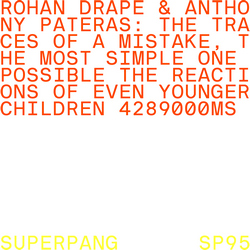
“The latest collaborative work from Rohan Drape & Anthony Pateras[…] could be regarded as a development of the processes explored on their outstanding 2018 album Ellesmere. Whereas previously the emphasis had been on glacial pipe organ movement, here the … expanded instrumental palette is channelled toward similar behavioural ends …, establishing immersive steady states that challenge our understanding of action and interaction, cause and effect, and longer-term ideas of direction and progression. […] The quartet and electronic version of The traces of a mistake, for example, presents an environment rooted on a sustained electronic shimmer, around which noodling piano notes, glistening violin arpeggios and soft, sporadic percussion play out, occasionally flecked with scratches… . Yet more engrossing, though, is Distance bestows then takes right back. The connections between piano, organ and electronics are asserted more clearly here … but they’re articulated with the greatest delicacy. The opening could hardly be more gorgeous, the piano glancing off tones present in the shimmer causing a combined effect that sounds transfixed, captivated in a reverie. […] It’s a magnificently tranquil yet convoluted performance, the high point of this hugely impressive three-part testament to the ways that Drape and Pateras continue to reinvent what ambient can be.” [reviewed in October]
4 | Marcin Stańczyk – Mosaïque

“Mosaïque, for cello and electronics, lives up to its title in its assemblage of miniatures noises that effectively constitute the individual motes of colour in its pointillist surface. Whether or not these tiny sonic morsels – a mixture of palpable impacts and vocalisations and more ambiguous swishes and wind – can be said to form some kind of accumulated “image” is hard to say, though this uncertainty is another example of the fascinating elusiveness in Stańczyk’s music. This aspect becomes fully ecosystemic in the no less remote – if anything, much more alien – ensemble piece Blind Walk. Stańczyk populates this ecosystem with fleeting sounds – breaths, whistles, calls, blurts and bursts of song – suggestive of undefined creatures. […] Stańczyk re-directs these hypothetical life-forms’ attention away from us into more individuated modes of articulation, as if each instrument were an independent creature undertaking its daily routines oblivious to anything else in the sonic “jungle”. […]what i find most beguiling about Blind Walk is its beauty: the natural world we’re blindly walking through may be intimidating and bizarre, but it’s also stunningly glorious to behold.” [reviewed in November]
3 | Paul Obermayer – Splitting
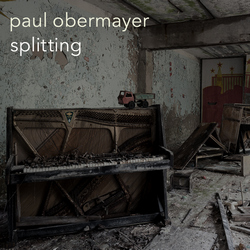
“[T]he title … could be read as a reference to the way acoustic sounds are broken down and analysed in order to reproduce them synthetically, digitally. As a consequence, Splitting thereby becomes a long-form, apparently real-time, artificially-intelligent effort made by the computer to sing like a child. The appearance of their voices at this late stage in the piece is like holding up the original both to see what progress has been made, and a reminder of the final objective. Suddenly, it becomes clear that the work’s opening cloud of swirling pitch was a blurred vapour trail of the children’s voices. And the extended, convoluted abstractions that followed, while they don’t overtly resemble singing in any meaningful sense, now retrospectively take on something of the quality of deconstructed (and partially reconstituted) ‘sung’ shapes and gestures, archetypal forms emanating from imaginary, abyssal vocal cords. As such, the way that the latter material (the children) causes a retroactive reappraisal of the former (the abstract shapes) … create[s] something that sounds both integrated and cohesive … . The meaning, and the resolution, of Splitting might be debatable, but its beauty is beyond question.” [reviewed in May]
2 | Aleksandra Gryka – Interialcell
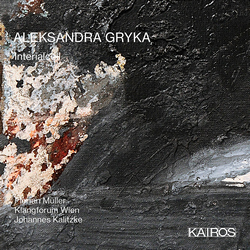
“All but one of the works on this disc feature forms of ensemble, and their primary mode of operation involves uniting and directing its forces into various kinds of mass action. […] Above all, these works … appear to be more about the journey being undertaken than by any putative notion of “destination” or “outcome”. Take Emtyloop for string quartet … in which the players continually group together to articulate looping and repeating ideas. […] Maybe from one perspective they’re all failed efforts to attain something, though across the work’s duration a palpable overall sense of balance is conveyed, being a series of looping figurations that rise from and fall back into nothingness. […] What separates einerjedeneither from the other works on the album is its underlying emotional heft, coupled with a distinct sense that the standard limitations of instruments are no longer adequate. […] It’s a jaw-dropping, mesmerising action that only slowly finds its way back to something approximating order, the players almost accidentally stumbling back into synchronicity before collapsing into fragments while the tinnitus continues ad infinitum. This is some of the most fearless, enthralling music-making you’re ever likely to hear…” [reviewed in November]

1 | Clara Iannotta – MOULT
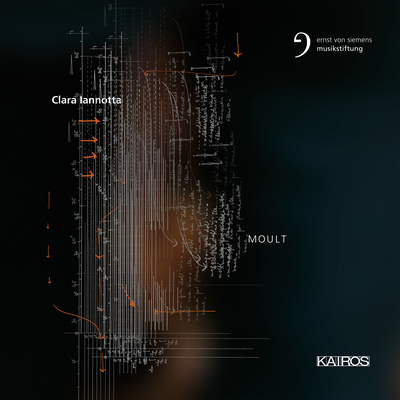
i hate writing about Clara Iannotta’s music.
As recently as last month, following the first UK performance of They left us grief-trees wailing at the wall, i was “beginning to accept that language … is laughably inadequate to do any kind of justice” to her music. And in September, at the Ultima festival in Oslo, i remember feeling deeply challenged by the need to write about her new work we left her in a sack for fairies to reclaim. Even beginning to try to put into words the nature of Iannotta’s music and the effect it has – on both me as a listener and the entire space within which i’m listening – is an enormous struggle, one that i never fail to be intimated by. So in this sense i hate writing about her music: no words can adequately live up to the radicality of its language and the way in which Iannotta systematically redefines what music is.
Yet – i love writing about Clara Iannotta’s music.
Every single time i’ve heard anything by her – whether in the concert hall or in recordings – i can hardly wait to express the experience to others, spluttering and blundering over superlatives even while still trying to make sense of the sonic experience, filled with enthusiasm and uncertainty in equal measure. In the same way that Iannotta stretches and breaks conventions of language, responding to her work requires a similar stretching of vocabulary and discourse, in a desperate effort to capture something that authentically speaks to it as both cause and effect. So in this sense i love writing about her music: always in vain, always the joy of the attempt.
MOULT is staggering. i wrote almost 1,000 words about this album back in July, so i won’t (and couldn’t – at least, not yet) go through it all again here. Yet nearly half a year after first contact with this album, i’m still finding my way into it, still being spellbound by its plunge into a world of sound that’s so entirely new, still navigating through its unpredictable yet somehow not entirely disorienting narrative structures. Over time, i’ve been struck more and more by the fact that, unlike so much contemporary music that seeks to throw out conventions but ends up with something 100% instantly forgettable, so much of Iannotta’s material lingers in the mind in a highly tangible way, despite it often being so intangible and defiantly beyond expectations and obvious points of reference. I alluded to this in my original review:
… throughout these pieces there’s a delicate balance being struck between the vagueness caused by […] nebulosity and instances of certainty, either in the form of concrete sounds, gestures and ideas being given (at least some) prominence or through larger-scale en masse assertions. There’s something quite polarising about this balance, to the extent that the more certain elements are not only highly noticeable in context, but also highly memorable afterwards. Something as simple as a repeating piano note becomes a sonic entity of huge significance; in the title work it appears both early and late in the midst of considerable apparent energy, yet seemingly untouched and untroubled by it, whereas in paw-marks in wet cement (ii) it operates in a more rhythmic way as just one among many clunking impacts in a largely intangible environment. Another recurring feature is the presence of ratchet-like rattling, which tends to form part of an apparent reaction to, and / or aftermath of, various violent catalytic actions. In MOULT it unexpectedly appears during the coda; in paw-marks it comes in the wake of angry swells; in Troglodyte Angels Clank By it’s heard in response to a series of heavy accents; while in dead wasps in the jam-jar (ii) we glimpse it within a sequence morphing from intensely muscular movement into a network of clatter playing out over low drones.
i then went on to remark how, “This balance that Iannotta strikes in these pieces is effective enough, but the more vague episodes are arguably more mesmerising than anything else.” Regarding this most important aspect of her work, i’ve come to realise there’s something a lot more palpable and significant going on than a simple mesmeric response. In direct inverse proportion to the ostensible scale, dynamic and weight of a lot of Iannotta’s material, i can never shake the sense that what i’m experiencing, what i’m in the midst of, what’s ultimately surrounding and permeating me, is something of baffling, overwhelming enormity. i’m reminded of Rudolf Otto’s phrase, “mysterium tremendum”, the sense of being in close proximity with – immersed in, even – what he coined the ‘numinous’. Otto’s description of this feeling is not so far removed from the experience of Clara Iannotta’s music, in terms of both cause and effect:
The feeling of it may at times come sweeping like a gentle tide, pervading the mind with a tranquil mood […]. It may pass over into a more set and lasting attitude […] thrillingly vibrant and resonant, until at last it dies away […]. It may burst in sudden eruption up from the depths of the soul with spasms and convulsions, or lead to the strangest excitements, to intoxicated frenzy, to transport, and to ecstasy. It has its wild and demonic forms and can sink to an almost grisly horror and shuddering. It has its crude, barbaric antecedents and early manifestations, and again it may be developed into something beautiful and pure and glorious. It may become the hushed, trembling, and speechless humility of the creature in the presence of—whom or what? In the presence of that which is a Mystery inexpressible…
Rudolf Otto, The Idea of the Holy, pp. 12-13
Inexpressible indeed, which brings us back to the difficulty in finding words to encapsulate not just the four works on MOULT but Iannotta’s work in general. i haven’t said enough; i’ve said enough. Just listen to it; MOULT is probably like nothing you’ve ever heard before, and definitely the best album of 2021.
